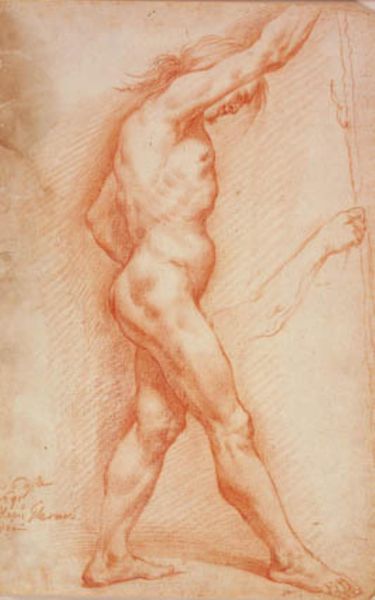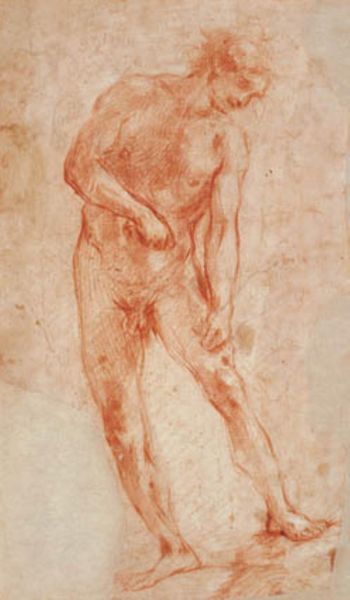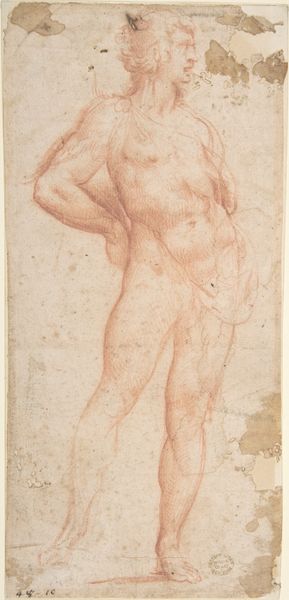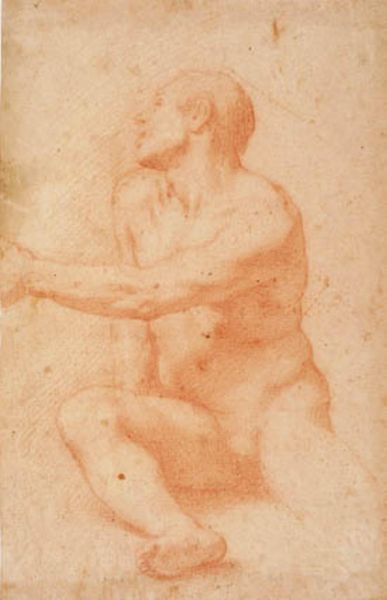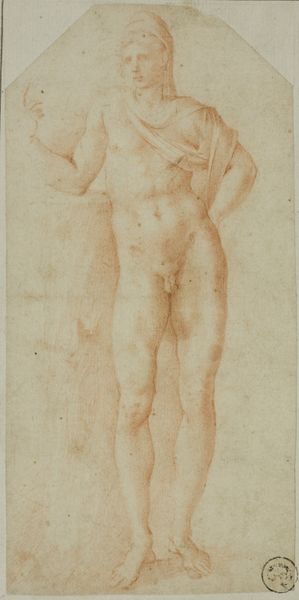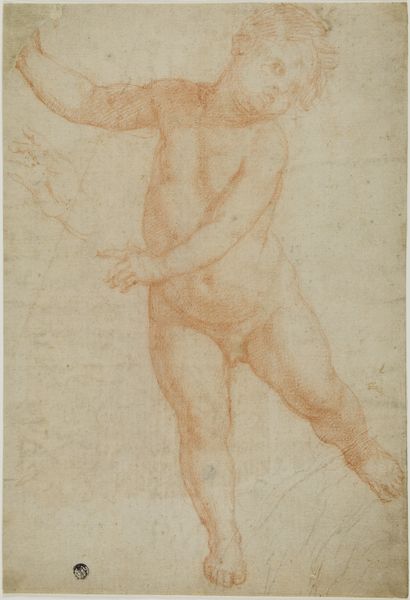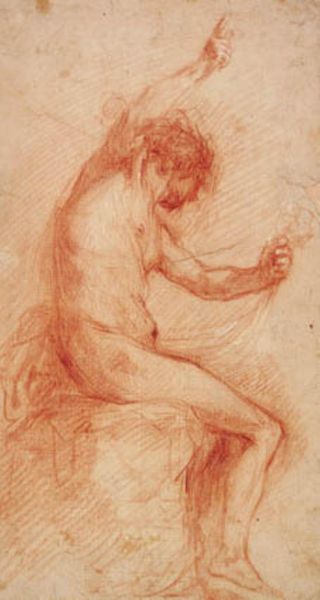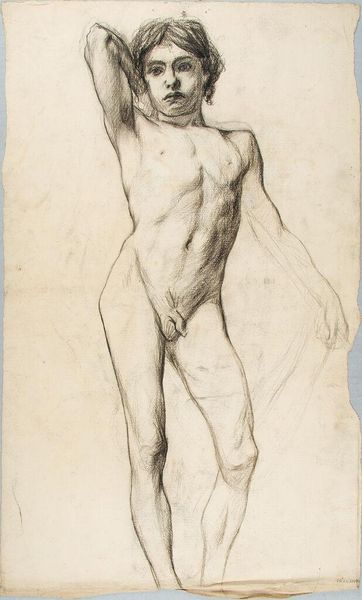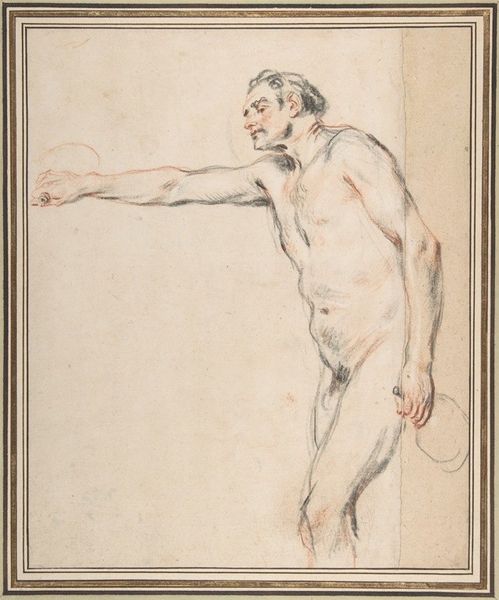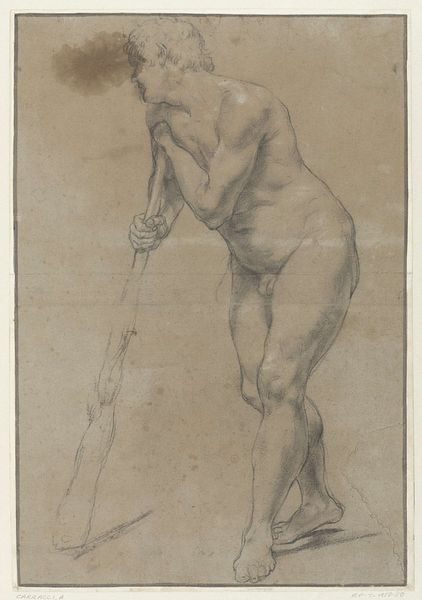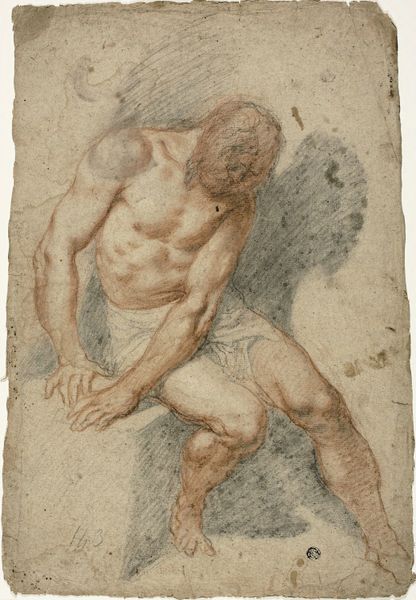
Running youth looking backwards over his left shoulder 1536 - 1603
0:00
0:00
drawing, charcoal
#
drawing
#
charcoal drawing
#
figuration
#
11_renaissance
#
charcoal art
#
charcoal
#
nude
Dimensions: 417 mm (height) x 283 mm (width) (bladmaal)
Curator: Immediately striking, isn't it? There's a vulnerability laid bare. Editor: We are currently viewing "Running youth looking backwards over his left shoulder," a charcoal drawing by Santi di Tito, created sometime between 1536 and 1603. It resides here at the SMK, the Statens Museum for Kunst. Curator: The medium is central here. Di Tito’s use of charcoal creates these subtle tonal shifts in the figure’s flesh, but more importantly, look at the rapid, almost frantic quality of the line work! It speaks of urgency, perhaps even panic. This drawing provides us access to his working method, his process of figuring the body. Editor: Agreed, there's a compelling immediacy. Note how Di Tito focuses on anatomical accuracy while employing dynamic lines to render movement. The figure's torsion and the implied gaze directed backwards construct the dramatic tension in the image. Curator: Consider too the historical context. The nude form itself becomes politicized. While rendered in the traditional, ideal form, the implication of flight or pursuit certainly brings contemporary questions to the fore: what is he fleeing from? The work leaves those implications unspoken, but in its creation speaks directly to its time. Who were these drawings made for, and who had access to them? Editor: Your material concerns make an interesting counterpoint to the piece's overt dynamism and movement! Let's unpack further that dynamism: the positioning of the limbs and the sharp contrasts enhance the sculptural aspects of the youth. Even though two dimensional, Di Tito teases out the contours into near three-dimensionality. The lack of background puts even greater emphasis on his construction. Curator: Precisely. And beyond simple admiration, considering who worked on the support, who prepared the charcoal... we might unpack the division of labor in workshops such as Di Tito's. And what about access to models themselves? Editor: All compelling lines of inquiry! On initial viewing, the artwork seemed relatively simple in composition. Your discussion about historical context really deepens the resonance of those visual dynamics. Curator: And your careful breakdown of formal technique helps ground those speculations! Thank you.
Comments
No comments
Be the first to comment and join the conversation on the ultimate creative platform.
